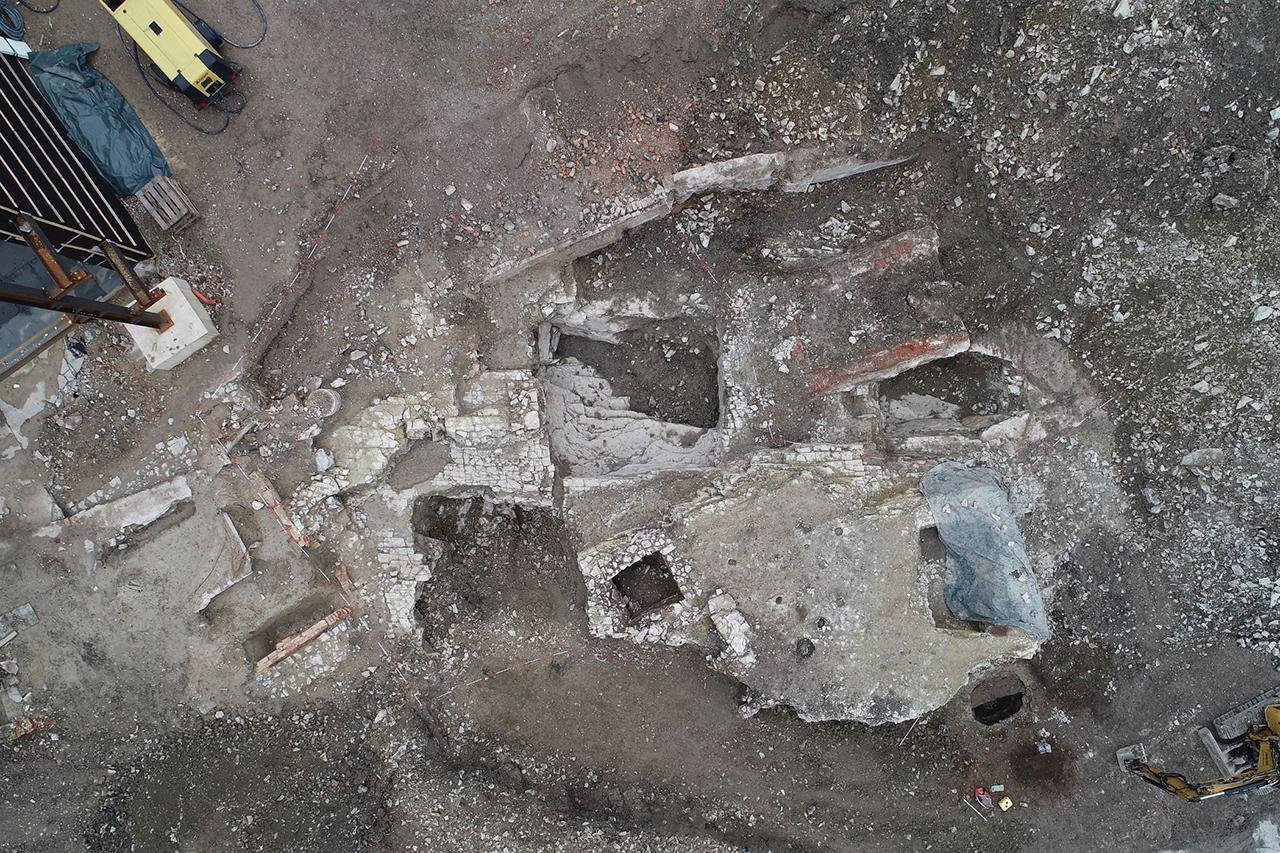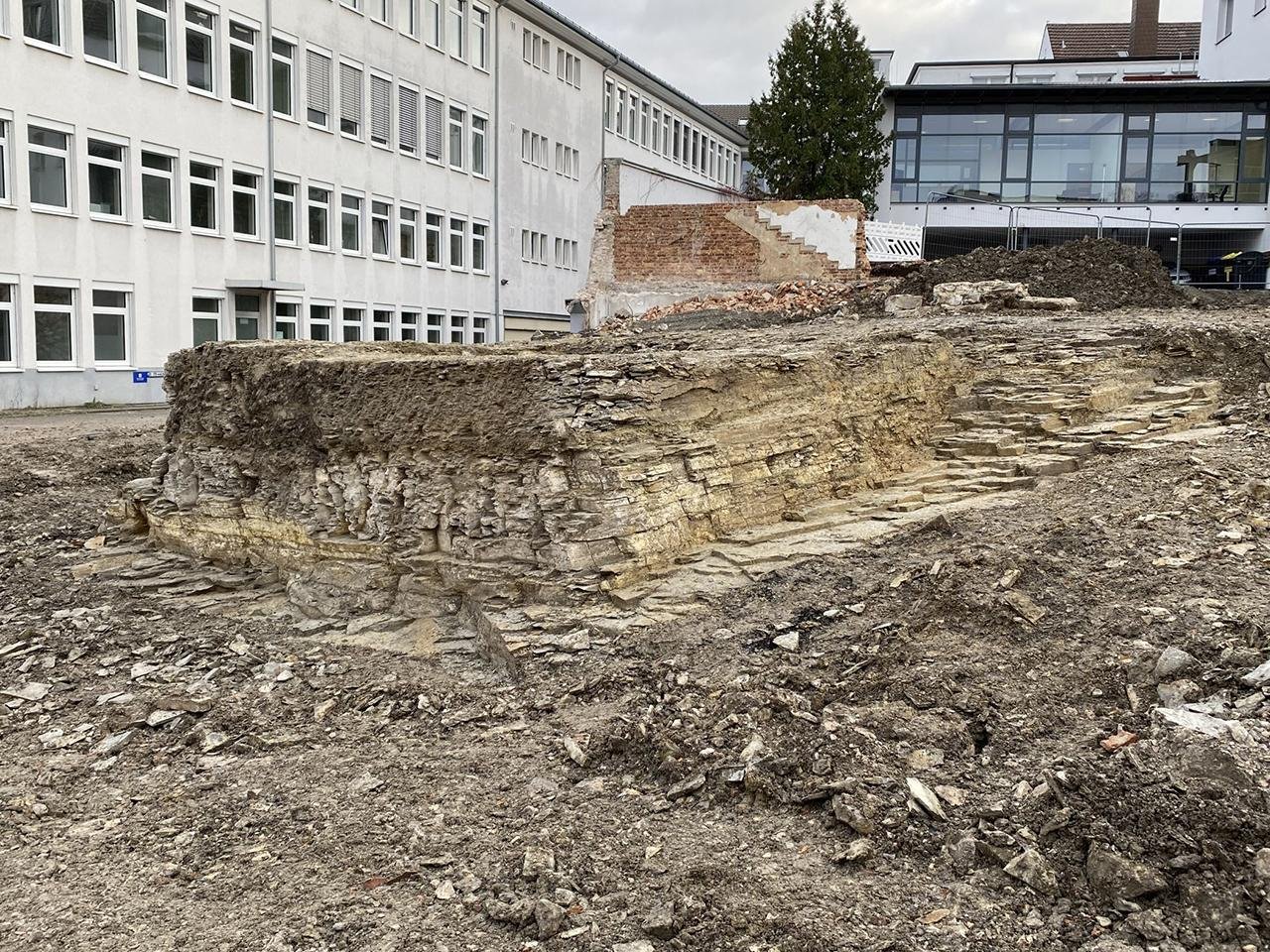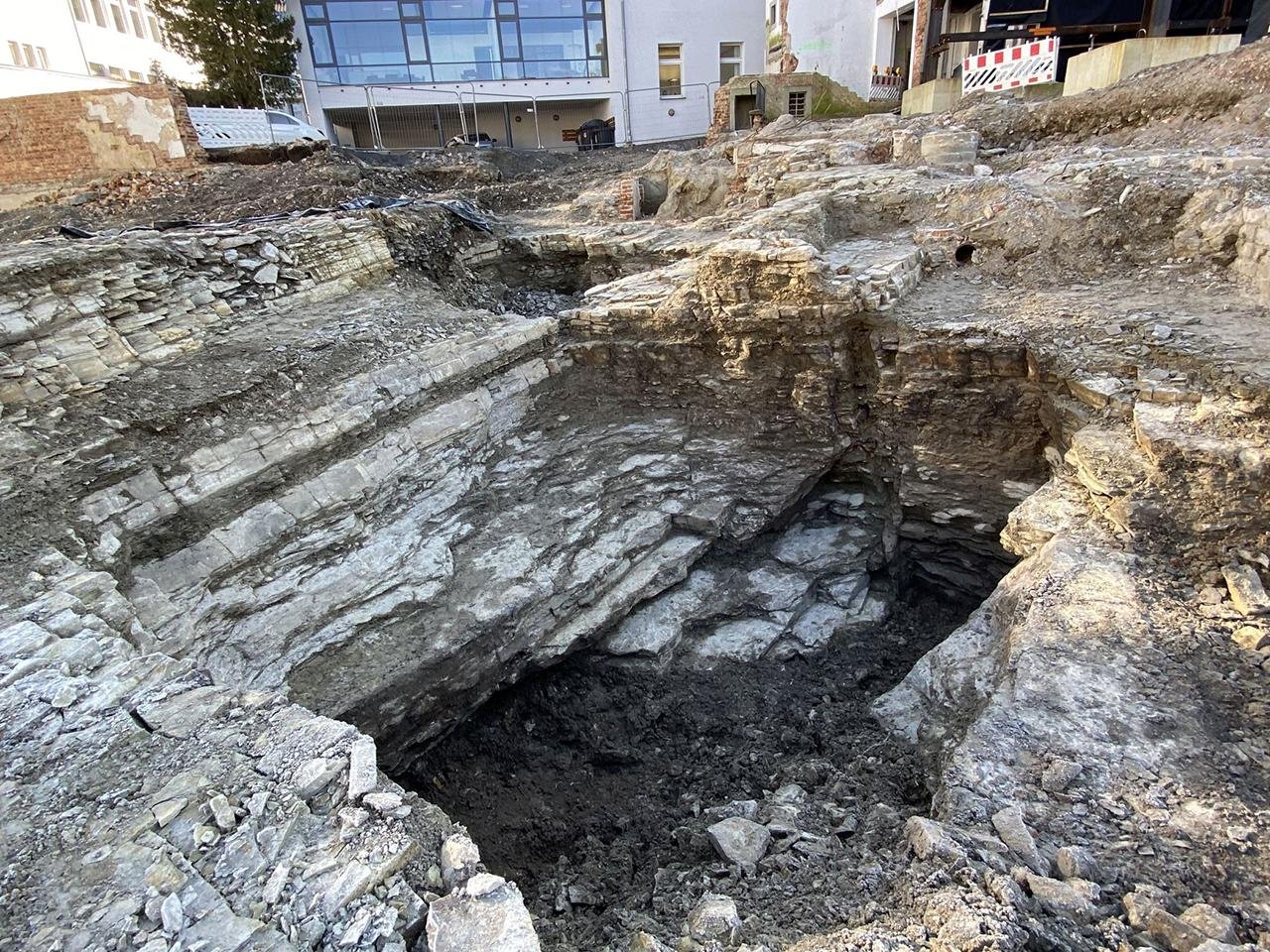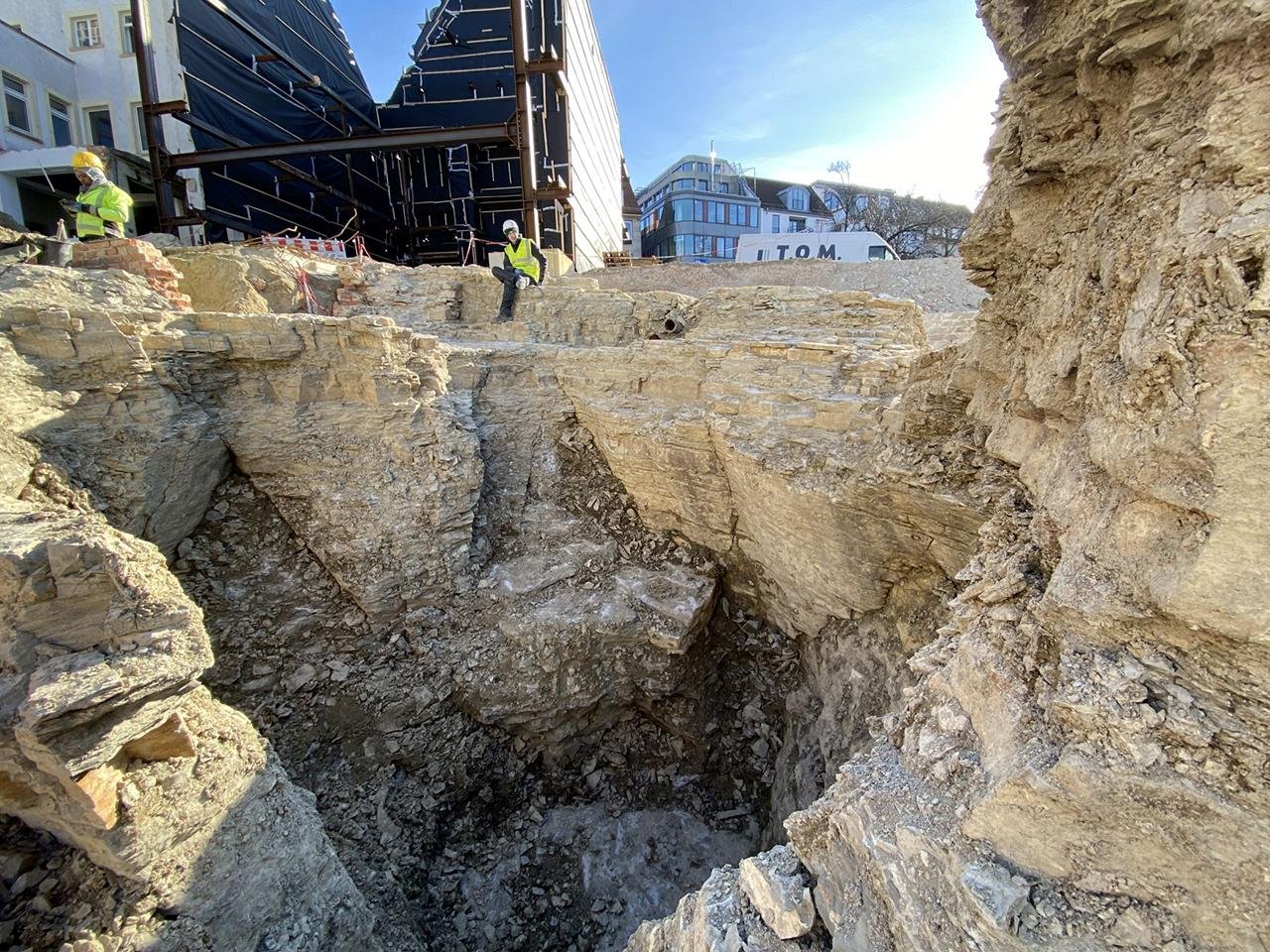An excavation led by archaeologists from the Westphalia-Lippe Regional ᴀssociation in Germany has unearthed a series of basement rooms and a former quarry beneath the historic center of Paderborn. The dig is a preparatory effort for the construction of a new administration building in the town and commenced in November 2024. As an area of historic significance, the site lies near the immunity wall of the Abdinghof Monastery and is bordered by Marienplatz and Abdinghofstraße.
 Drone view of the current excavation area. Credit: Denkmal3D/H. Tausendfreund
Drone view of the current excavation area. Credit: Denkmal3D/H. Tausendfreund
The excavation exposed a quarry known to have been used from the 11th century onwards to provide building material for churches and palaces in Paderborn. Over time, the area was used for residential construction and infrastructure projects. While its extent remains unknown, the quarry was extended southwest from the monastery area toward the lower-lying Pader Springs.
“We have not yet reached the bottom of the quarry, but the backfill layers we have removed so far extend to depths of up to five meters,” LWL city archaeologist Dr. Sveva Gai said. She pointed out that the site bears similarities to a previous excavation in Kötterhagen, where a quarry was discovered to be eight meters deep.
The use of the quarry began to decline with the growing construction above it. The dense medieval development on this site was largely destroyed during the Second World War, after which reconstruction efforts took precedence over archaeological preservation. “At that time, there was little concern for architectural and archaeological preservation. Entire sections of the city were in ruins and had to be rebuilt quickly,” Dr. Gai said. She added that poorly trained archaeological personnel in the rapid post-war period hindered documentation efforts.
 Exterior area of the smaller, rock-cut cellar. Credit: Denkmal3D/H. Tausendfreund
Exterior area of the smaller, rock-cut cellar. Credit: Denkmal3D/H. Tausendfreund
Besides the quarry, archaeologists identified some rectangular basement rooms cut into the rock. These spaces likely served as stable foundations for the buildings that once stood above them, built from stone blocks taken from the site itself.
“Most of the structures are carved into the rock,” said excavation director Dr. Heike Tausendfreund. “We have uncovered several rectangular rooms that can be interpreted as basements.” The remaining architectural features provide insight into Paderborn’s medieval construction techniques.
 The central square cellar. On the left, the walls of the stepped quarry can be seen. The cellar is still partially filled with backfill. Credit: Denkmal3D/H. Tausendfreund
The central square cellar. On the left, the walls of the stepped quarry can be seen. The cellar is still partially filled with backfill. Credit: Denkmal3D/H. Tausendfreund
The team hopes that backfill layers may provide important evidence for dating significant events related to the site and the other structures that once occupied the area. “We hope the findings in the backfill will provide crucial dating evidence,” emphasized Dr. Tausendfreund.
The major challenge of excavation work lies in the extent of the changes the area has undergone, particularly in the post-war period when much of the old city was rebuilt. While modern cellar structures can easily be distinguished, filled-in sections of the quarry obscure precise historical dating. However, the excavation is progressing alongside the construction of the new administration building.
 View from the northwest into the depth of the quarry, approximately seven to eight meters below today’s ground level. Credit: AfW/S. Gai
View from the northwest into the depth of the quarry, approximately seven to eight meters below today’s ground level. Credit: AfW/S. Gai
“Now that the preparatory work for the excavation pit has been completed, construction of the actual foundation pit will soon begin,” said Johanna Jablonski, project manager for the city of Paderborn.
In 2021, archaeologists studied historical cellars situated beneath the Heising House. According to the study, the 1670s foundations and original vaulted cellar ceilings of the building have remained well intact, despite modifications over the years. These cellars, now under historical protection, will be preserved and integrated into the new development.
More information: Westphalia-Lippe Regional ᴀssociation





